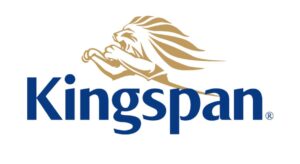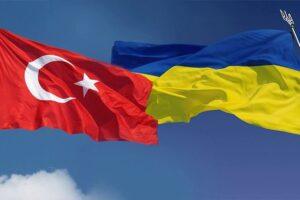
Ukrenergo offers several options for distributing funds that will be received by the company from the sale at auctions of interstate cross-sections for commercial electricity exports to Europe, Head of the operator Volodymyr Kudrytsky said at a press conference in Kyiv on Wednesday.
According to him, the potential supply of generating capacities of Ukraine, which can be released and directed to the export of electricity, is calculated in gigawatts. At the same time, according to the current legislation, the proceeds from Ukrenergo shall be directed to the development of interconnectors.
“Given the scale of potential income, we simply won’t be able to use so many funds in the short term. In such a situation, various mechanisms for socializing this money into the energy sector are possible. For example, we have debts on the balancing market, and we can pay off debts over a certain period of time proportionally to all market participants using this money,” Kudrytsky said.
The head of Ukrenergo said that energy companies would be able to stabilize their work by using the money received to prepare for the upcoming winter, purchase fuel and carry out repairs.

President of Ukraine Volodymyr Zelensky called on leading managers of international companies to create jobs in Ukraine.
“I would very much like, as the President of Ukraine, that your companies consider the possibility of entering and finding their place in the Ukrainian economy. For us, these are, first of all, jobs. You understand that these are big challenges for 12 million people who have lost because of this bloody war of their homes, they left them, lost their jobs, their children lost schools, and Ukraine lost subjects that create a state, who are real citizens, pay taxes, etc.,” Zelensky said, speaking to attendees at the Yale SEO Summit on Wednesday.
“Jobs are very important. The jobs that companies like yours can offer by investing in our economy. This is an important step,” he added.
According to the head of state, it is also important that international companies invest in opening their offices in Ukraine.
“So that you find for yourself those layers of business that you are ready to find: from digitalization to energy. We are ready to talk about everything. But we are not ready to create a minimum tax system. You must understand us: we are talking about the restoration of Ukraine, which means that we should do it on finances. Comfortable conditions – yes, transparent conditions – yes, quick management regarding the start of your business in Ukraine – yes. This is support when all this is beneficial for both you and us,” the president said.

The Irish manufacturer of heat-insulating energy-efficient technologies Kingspan intends to invest EUR200 million in the creation of a construction technology hub in Ukraine.
“This investment is at the crossroads of three crises: the climate crisis, the energy security crisis, and the crisis caused by the Russian war against Ukraine. The new construction technology hub that we plan to create will make a positive contribution on all three fronts: support Ukraine rebuilding its economy, meet demand in Central and Eastern Europe on energy-efficient buildings and help Europe reduce dependence on oil and gas imports,” Jean Murtha, CEO of Kingspan Group, was quoted in a press release from the Ukrainian Ministry of Foreign Affairs.
According to him, the company expects to immediately start developing the project. It is assumed that the hub will be located in the west of Ukraine, its construction will be completed within five years. The implementation of the project will create 600 new jobs.
“Our goal is not only to rebuild the facilities destroyed by the Russian invaders, but also to create a modern innovative economy using the leading experience in urban development and the application of green technologies,” Foreign Minister Dmytro Kuleba said, welcoming Kingspan’s decision to invest in Ukraine.
Kingspan, founded in 1972, specializes in building solutions for building envelopes (roof, walls, facades), as well as protective walls, cold storage doors, high-tech solid urethane and solid phenolic thermal insulation for roofs, walls, floors and pipelines. Kingspan operates 198 manufacturing facilities worldwide.
As reported, in April, Kingspan announced the completion of the exit from the Russian business. Russia accounted for less than 1% of Kingspan’s global operations. The company also donated $750,000 to UNICEF to set up five Blue Dot centers to help refugees on the Ukrainian border.

Turkey does not leave attempts to resume the dialogue between Ukraine and the Russian Federation, and also expresses its readiness to provide platforms for these negotiations, Ukrainian Ambassador to Turkey Vasily Bodnar said.
“Now Turkey does not leave attempts to resume this dialogue, they express their readiness to provide platforms for these negotiations. Today’s meeting (of the Foreign Ministers of Turkey and Russia – IF) was also aimed at finding common ground for continuing these negotiations. What was publicly stated says that they are more focused on the communication of the parties, that there is a readiness for a possible resumption, and for their part they declare their readiness to contribute to this,” Bodnar said at a briefing at the Ukraine media center on Wednesday.
He added that “so far there is no talk of any specific steps towards this, since it should be clear what conditions which side is expressing.”
“Our immediate condition is the withdrawal of Russian troops. Then the negotiations may have a chance of success and end with the signing of a certain document. Otherwise, the so-called theory of “peace in exchange for territories” does not work for us. And the Turkish side understands this very well, at least trying to find out now the position of the Russian side and help in the resumption of this dialogue,” Bodnar said.

Starlink Ukraine (Starlink Ukraine) received an operator license.
“The company has just been entered in the Register of providers of electronic communication networks and services at number 1. The representative office of SpaceX will soon begin active work in Ukraine,” Deputy Prime Minister – Minister of Digital Transformation Mikhail Fedorov wrote in the Telegram channel.
According to the State Register of Individuals and Legal Entities-Entrepreneurs, Starlink Ukraine LLC was registered on April 27, 2022 in Kyiv. Its leader is Elena Kandia.
The founder of the Ukrainian company is Starlink Holdings Netherlands B.V. (USA), the ultimate beneficial owner is Elon Musk.
The authorized capital of Starlink Ukraine LLC is UAH 50.

The national football team of Ukraine beat the national team of Ireland in the opening match of the UEFA Nations League, Suspilne reports.
“The Ukrainian national football team started with a victory in the first match of the League of Nations. The Ukrainians beat the team of Ireland with a minimum score of 1:0,” reads a message published on the website on Thursday night.
However, “the Ukrainians failed to take the lead in the group.” According to the results of the standings, Scotland is in the lead.